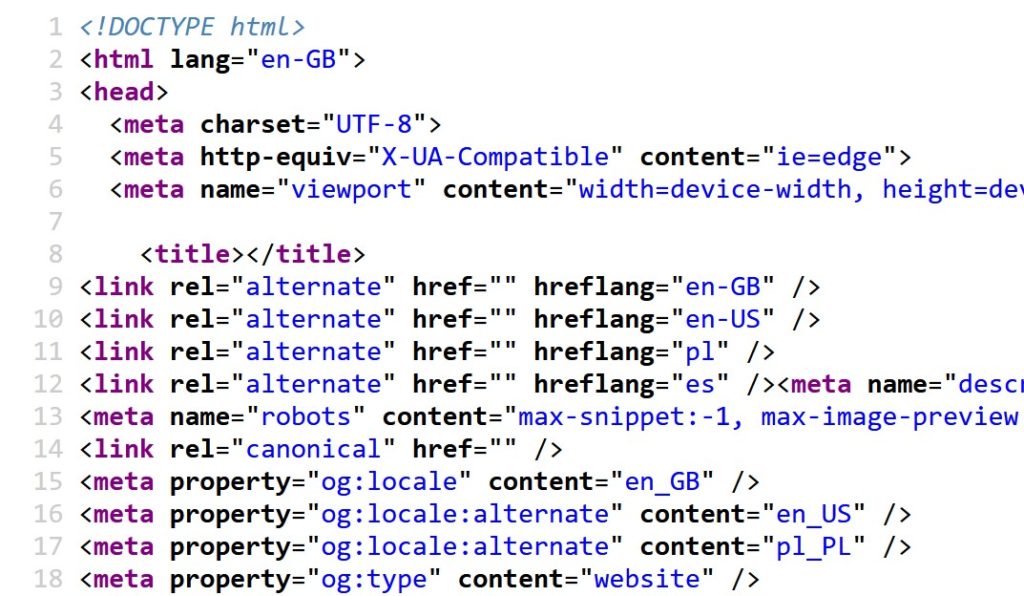
What are Meta Tags and Which Ones are Important?
If you’ve spent any time on the internet reading about SEO, you’ve surely heard about meta tags mentioned everywhere. Metas are a vital part of any SEO strategy, and if you want to up your game and become more visible, you have to learn about them.
What are Meta Tags?
Simply put, meta tags are a way for you to communicate with search engines and other web crawlers. These crawlers can’t understand natural language and have difficulties inferring what kind of content is on a page.
That’s why you put a meta tag in the header of your webpage, and in it, you’ll try to describe what the web page is about in a succinct, attention-grabbing, and informative way. This will make it much easier for the crawler to interpret your webpage and make sure the users see the relevant parts.
Why Do We Need Meta Tags?
You might be wondering what’s the purpose of writing something that web crawlers mostly see. Isn’t your page targeted at your customers?
Actually, research shows that people are using search engines like Google and Bing to find websites more often. Having a meta tag won’t only help you rank higher, but it will help you tell Google and Bing how to display you in the search engine results. You’ll be able to tell them what picture to show, what kind of description to display, and what kind of business you’re running. This way, you’ll be able to create the perfect search engine result that will help you stand out from the rest.
Not only that, the meta description will help the search engines identify which market you’re targetting, so they’ll show your webpage to those who have a higher chance of being more interested in your product/content. Meta tags will help you generate more clicks from users that are more interested, and your site will see huge growth and increased traffic.
Which Elements of Meta Tags are the Most Important?
Due to how strong and useful they are, meta tags comprise many elements and tweaks. This can be a bit overwhelming for someone who doesn’t have a lot of experience working with meta tags. Here is a list of the most important tags, how to use them correctly, and what you need to take into consideration:
Title
While technically not part of the meta tag, this tag is extremely important to set. What you write here determines how Google decides which kind of people might be interested in your website. It’s important the title is properly written and accentuates the core idea/product on your page.
Description
Arguably just as important as the title, aptly named, the description is where you summarise your page in a short paragraph (around 155 to 175 characters). This description shows under the title of the page on the search engines. This paragraph will bring focus on the most important elements of the page, and it should make the user excited to click on your website and read more. It is the best practice to end it with a strong call to action.
Rel=Canonical
Sometimes, you have to write a couple of pages that have very similar content with small variations. This usually happens when you describe a few similar products or target similar audiences with your webpages.
This is where rel=canonical comes in. A very strong but rarely used element, it lets you inform the search engines which page among the multiple variations is the main page (canonical). This will let the search engines know that you want more traffic directed toward that page, and you won’t be penalised for similar content across pages.
Meta-robots
The robots element is a little more complicated than the rest, and that’s because it gives you minute control over how crawlers deal with your site. A few highlights must include:
- <meta name=”robots” content=”noindex” /> tells search engines not to index or display a certain page in their search results. This is extremely useful when you’re working on an unfinished page or you don’t want anyone to see a certain page.
- <meta name=”robots” content=”notranslate” /> prevents Google and Bing from automatically translating your page to other languages. This is useful in a multitude of cases, from humour pages which are untranslatable to legalese which just confuses automatic translators and makes your page appear gibberish.
- <meta name=”robots” content=”nofollow” /> is another very powerful one. Usually, when you link to a page in your website, search engines consider it an endorsement, and that’s why they’ll show those linked pages higher in their search results. Often enough, you wouldn’t care about this, but what if the page was about your competitors’ products? You obviously don’t want to help out your competitors. There are a couple of other scenarios where it is useful, so it doesn’t hurt to add this element to your repertoire.